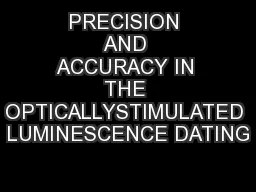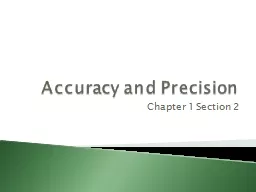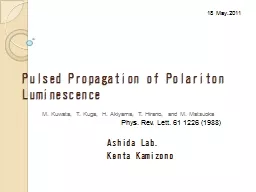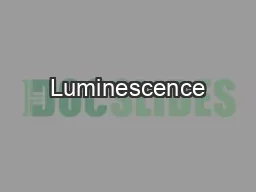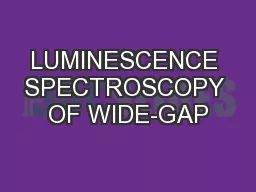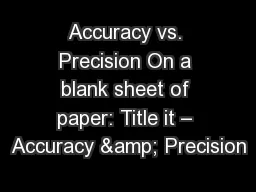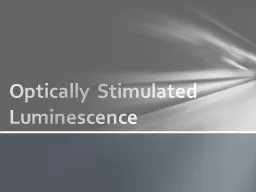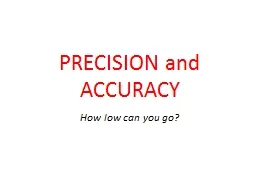PDF-PRECISION AND ACCURACY IN THE OPTICALLYSTIMULATED LUMINESCENCE DATING
Author : trish-goza | Published Date : 2016-07-03
ey wordsOSL DATINGWATERLAINLATE PLEISTOCENEGEOCHRONOMETRIA Vol 21 pp 116 2002 150 quartz and feldspar The release of trapped charge by lightAs a result the time
Presentation Embed Code
Download Presentation
Download Presentation The PPT/PDF document "PRECISION AND ACCURACY IN THE OPTICALLYS..." is the property of its rightful owner. Permission is granted to download and print the materials on this website for personal, non-commercial use only, and to display it on your personal computer provided you do not modify the materials and that you retain all copyright notices contained in the materials. By downloading content from our website, you accept the terms of this agreement.
PRECISION AND ACCURACY IN THE OPTICALLYSTIMULATED LUMINESCENCE DATING: Transcript
Download Rules Of Document
"PRECISION AND ACCURACY IN THE OPTICALLYSTIMULATED LUMINESCENCE DATING"The content belongs to its owner. You may download and print it for personal use, without modification, and keep all copyright notices. By downloading, you agree to these terms.
Related Documents

